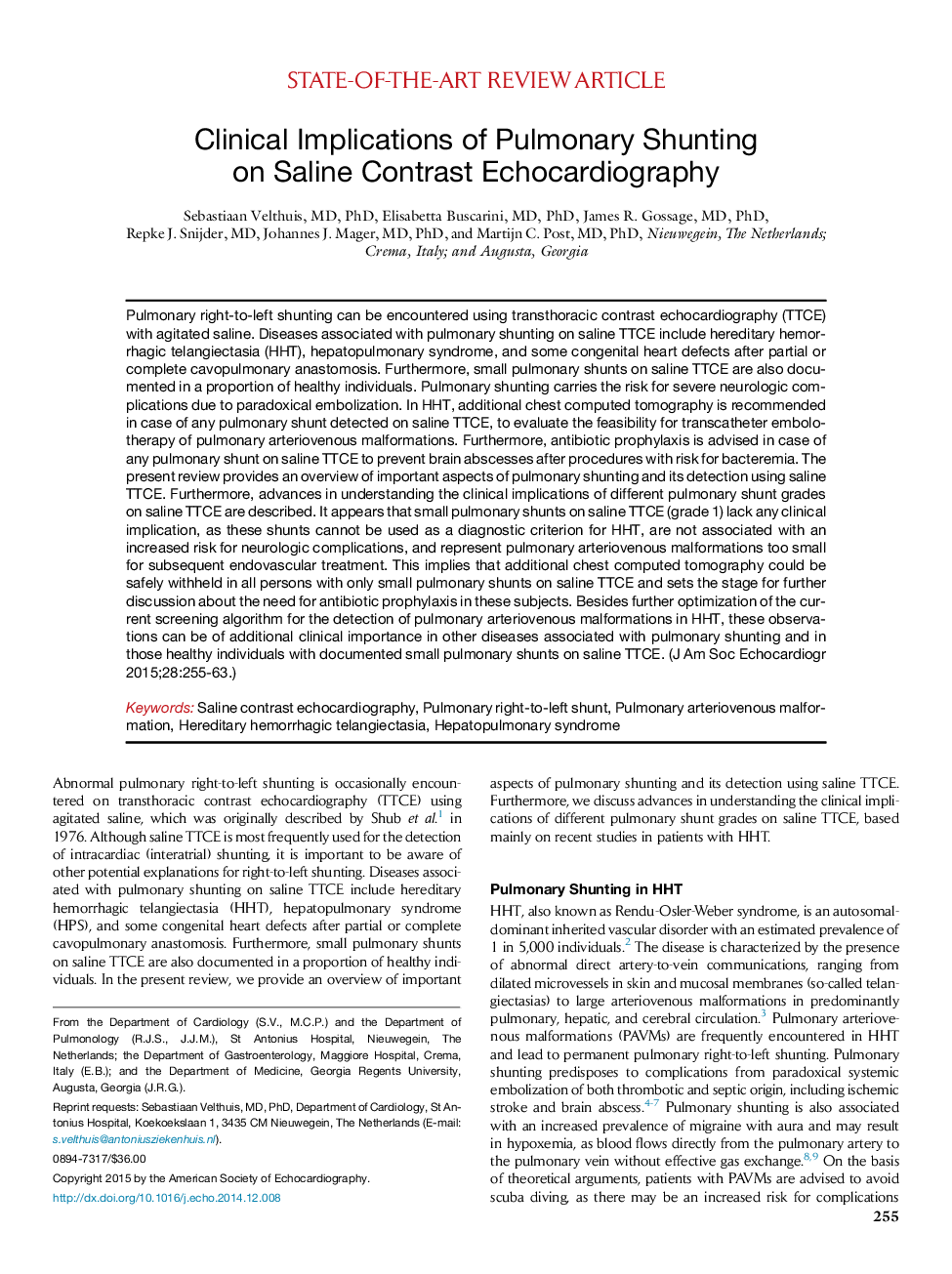| Article ID | Journal | Published Year | Pages | File Type |
|---|---|---|---|---|
| 5609496 | Journal of the American Society of Echocardiography | 2015 | 9 Pages |
Abstract
Pulmonary right-to-left shunting can be encountered using transthoracic contrast echocardiography (TTCE) with agitated saline. Diseases associated with pulmonary shunting on saline TTCE include hereditary hemorrhagic telangiectasia (HHT), hepatopulmonary syndrome, and some congenital heart defects after partial or complete cavopulmonary anastomosis. Furthermore, small pulmonary shunts on saline TTCE are also documented in a proportion of healthy individuals. Pulmonary shunting carries the risk for severe neurologic complications due to paradoxical embolization. In HHT, additional chest computed tomography is recommended in case of any pulmonary shunt detected on saline TTCE, to evaluate the feasibility for transcatheter embolotherapy of pulmonary arteriovenous malformations. Furthermore, antibiotic prophylaxis is advised in case of any pulmonary shunt on saline TTCE to prevent brain abscesses after procedures with risk for bacteremia. The present review provides an overview of important aspects of pulmonary shunting and its detection using saline TTCE. Furthermore, advances in understanding the clinical implications of different pulmonary shunt grades on saline TTCE are described. It appears that small pulmonary shunts on saline TTCE (grade 1) lack any clinical implication, as these shunts cannot be used as a diagnostic criterion for HHT, are not associated with an increased risk for neurologic complications, and represent pulmonary arteriovenous malformations too small for subsequent endovascular treatment. This implies that additional chest computed tomography could be safely withheld in all persons with only small pulmonary shunts on saline TTCE and sets the stage for further discussion about the need for antibiotic prophylaxis in these subjects. Besides further optimization of the current screening algorithm for the detection of pulmonary arteriovenous malformations in HHT, these observations can be of additional clinical importance in other diseases associated with pulmonary shunting and in those healthy individuals with documented small pulmonary shunts on saline TTCE.
Related Topics
Health Sciences
Medicine and Dentistry
Cardiology and Cardiovascular Medicine
Authors
Sebastiaan MD, PhD, Elisabetta MD, PhD, James R. MD, PhD, Repke J. MD, Johannes J. MD, PhD, Martijn C. MD, PhD,
